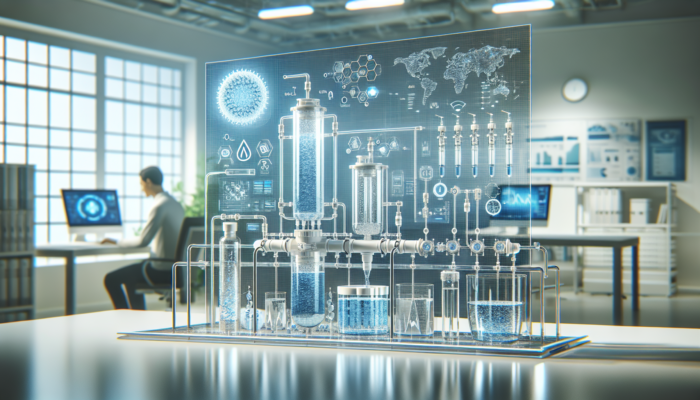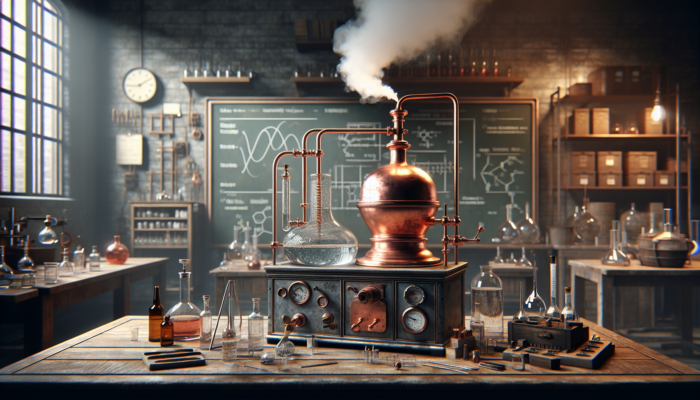Essential Water Purification Strategies to Guarantee Safe Drinking Water
Recognizing the Critical Significance of Water Purity for Health and Safety

Access to clean drinking water is a fundamental human right, vital for survival, health, and overall well-being. Unfortunately, millions of people around the world lack access to safe drinking water. A comprehensive understanding of the importance of water purification techniques is essential for promoting public health and safety. Contaminated water often harbors dangerous pathogens, heavy metals, and toxic chemicals, resulting in severe health complications. Waterborne diseases, exacerbated by poor sanitation, contribute to millions of illnesses and deaths annually, particularly in underdeveloped areas.
The role of water purification methods is crucial in safeguarding health. By utilizing effective purification techniques, we can remove harmful microorganisms and drastically reduce the occurrence of diseases such as cholera, dysentery, and typhoid fever. Additionally, toxic heavy metals like lead and mercury, often found in contaminated water supplies, can lead to serious health issues, including neurological damage and kidney dysfunction. Therefore, employing the right water purification methods is not just an option but an urgent necessity for the protection of public health.
Moreover, the psychological benefits of having access to safe, purified water are substantial. It fosters a sense of security and trust within communities, encouraging individuals to embrace healthier lifestyles. Thus, advocating for robust water purification practices and policies is not just about physical health; it also involves strengthening community resilience and enhancing overall well-being.
The Extensive Benefits of Water Purification for Environmental Protection and Economic Stability
The advantages of water purification strategies extend well beyond individual health; they are integral to promoting environmental sustainability and economic resilience. The ongoing global water crisis underscores the pressing need for effective purification techniques to safeguard our precious natural resources. Polluted water bodies can lead to significant biodiversity loss and disrupt ecosystems, which poses threats to both wildlife and plant species.
Investing in efficient water purification systems not only protects public health but can also yield considerable economic benefits. Clean water is a necessity for agriculture, industry, and tourism, which are all vital components of economic development. For example, farmers rely heavily on purified water for irrigation to maintain healthy crop yields, while various industries depend on clean water for numerous manufacturing processes. Enhancing water quality can boost productivity and reduce costs associated with healthcare and the remediation of polluted water.
Furthermore, the economic benefits of water purification are particularly pronounced in developing countries. Access to clean water can alleviate the financial burden of treating waterborne diseases, allowing families to redirect resources towards education and other essential services. Overall, the global implications of water purification are profound, contributing to economic growth, environmental stewardship, and an improved quality of life for countless people.
Understanding Regulatory Standards for Water Purity: Key Insights
Comprehending the intricate landscape of water purification methods requires a solid understanding of the regulatory frameworks that govern water quality. Various organizations, such as the World Health Organization (WHO) and the Environmental Protection Agency (EPA), set forth guidelines to ensure water safety. These regulations specify acceptable levels of contaminants, including bacteria, viruses, heavy metals, and chemical pollutants.
Adhering to these standards is paramount for safeguarding public health and safety. Water suppliers are mandated to regularly test and monitor water quality to ensure compliance with regulatory standards. Familiarizing oneself with these benchmarks empowers consumers to make informed choices regarding their water sources and purification systems. It also promotes accountability among water providers, ensuring adherence to essential safety protocols.
Moreover, stringent regulations are increasingly critical in an era marked by globalization and climate change. Ensuring that all communities, particularly marginalized populations, have access to purified water is a fundamental aspect of social equity. Awareness of regulatory standards for water purification allows individuals and communities to advocate for their rights and demand access to safe drinking water.
Innovative Water Purification Techniques: Unveiling Modern Advancements

Understanding Reverse Osmosis: Mechanisms and Effectiveness
Among the top-tier water purification methods, reverse osmosis (RO) is renowned for its ability to eliminate a wide range of contaminants. This technology uses a semi-permeable membrane that filters out impurities, allowing only water molecules to pass through. The process initiates when pressure drives water through the membrane, effectively separating clean water from contaminants, including salts, heavy metals, and microorganisms.
The effectiveness of RO systems is particularly notable in areas where water sources are heavily contaminated. Research indicates that RO can remove up to 99% of dissolved solids, making it a preferred choice for both households and industries seeking high-quality water. However, despite its high efficiency, RO systems have some drawbacks, including a slower processing rate and the generation of wastewater, which can be a concern.
Additionally, while reverse osmosis excels at removing harmful substances, it may also eliminate essential minerals from water, potentially affecting taste and quality. To address this, some systems incorporate remineralization filters to restore beneficial minerals after purification. Overall, reverse osmosis continues to be a foundational element of contemporary water purification methods, effectively merging advanced technology with proven outcomes.
Utilizing Ultraviolet (UV) Purification: A Cutting-Edge Approach to Water Safety
Ultraviolet (UV) purification represents an innovative and increasingly popular water purification method that harnesses the germicidal properties of UV light to disinfect water. This technique involves exposing water to UV radiation, which effectively inactivates bacteria, viruses, and other pathogens without the need for chemicals.
The allure of UV purification lies in its capacity to provide rapid disinfection while maintaining the taste and chemical integrity of water. Unlike traditional chlorination methods, UV treatment does not introduce any chemicals into the water, making it an environmentally friendly option. Furthermore, UV systems require relatively low maintenance and can be easily integrated into existing water treatment setups.
Nevertheless, UV purification has its limitations. It is ineffective against chemical contaminants and requires clear water for optimal functionality, as turbidity can impede the effectiveness of the UV light. Additionally, UV systems do not provide residual disinfection, meaning that any contaminants introduced after treatment could pose risks. Despite these challenges, the benefits of UV purification make it a vital component of comprehensive water purification methods.
Examining Distillation: A Traditional Method Still Relevant Today

Distillation is one of the oldest water purification methods, remaining relevant today due to its simplicity and effectiveness. This process involves boiling water to produce steam, which is then collected and condensed back into liquid form. Distillation effectively removes numerous contaminants, including heavy metals, salts, and organic compounds, leaving behind impurities.
One of the primary advantages of distillation is its ability to yield highly purified water. Operating through a physical process rather than chemical reactions allows distillation to achieve an exceptional level of purity. This makes it an ideal choice for laboratories and industries where water quality is paramount.
However, distillation is not without its drawbacks. The process can be energy-intensive and time-consuming, which may limit its practicality for large-scale applications or households with high water demands. Additionally, similar to reverse osmosis, distillation removes beneficial minerals, which can impact the taste and health benefits of water. Despite these limitations, distillation remains a reliable water purification method, especially for those needing high-quality water for specialized applications.
Choosing the Best Water Purification System for Your Home
Under-Sink Filters: A Convenient and Effective Water Purification Solution
Under-sink filters offer an appealing solution for homeowners looking for a practical and efficient way to ensure water purification. These systems are installed directly beneath the kitchen sink, providing ready access to purified drinking water without taking up counter space.
Typically, under-sink filters utilize a combination of filtration technologies, such as activated carbon and sediment filters, to eliminate a wide range of contaminants. They effectively reduce chlorine, lead, and other impurities, thereby significantly enhancing water taste and quality. Many under-sink systems can produce a continuous supply of purified water, making them ideal for families or individuals who consume large amounts of drinking water.
Installation is generally straightforward, requiring minimal plumbing adjustments. This ease of installation, coupled with a decreased need for bottled water, makes under-sink filters a compelling option for environmentally conscious consumers. Nevertheless, regular maintenance and timely filter replacements are essential to ensure optimal performance, and users should be aware of the specific contaminants targeted by their system.
In summary, under-sink filters provide a convenient and effective solution for home water purification. They allow families to access clean, safe drinking water while reducing reliance on bottled alternatives.
Whole House Systems: Comprehensive Water Purification Solutions for Your Entire Home
For those seeking a more extensive approach to water purification, whole-house systems represent an excellent option. These systems are designed to filter all water entering a home, ensuring that every faucet and appliance dispenses purified water. This comprehensive purification significantly enhances water quality throughout the household, addressing contaminants that may bypass point-of-use systems.
Whole-house systems typically integrate various filtration technologies, including activated carbon, sediment filters, and sometimes even UV disinfection. This multi-barrier approach effectively removes a broad spectrum of contaminants, such as chlorine, sediment, heavy metals, and microorganisms. Consequently, homeowners can enjoy better-tasting water while extending the lifespan of appliances and plumbing by minimizing scale and corrosion.
While whole-house systems offer numerous advantages, they often come with higher initial costs and may require professional installation. Additionally, regular maintenance, including filter replacements and system inspections, is crucial for ensuring ongoing effectiveness. Despite these factors, whole-house water purification methods provide peace of mind and convenience for families seeking thorough water quality solutions.
Portable Water Purifiers: Perfect for Travel and Emergency Situations
Portable water purifiers have surged in popularity in recent years, particularly among travelers and outdoor enthusiasts. These compact devices are designed to provide access to clean drinking water in a variety of situations, from hiking adventures to emergency preparedness.
Most portable purifiers utilize advanced filtration technologies, including activated carbon, ceramic filters, or UV light, to effectively eliminate contaminants. They can remove bacteria, protozoa, and even certain viruses, making them invaluable in areas where safe drinking water is scarce. Some models are designed to filter directly from natural water sources, while others attach to standard water bottles, offering flexibility for users.
A significant advantage of portable water purifiers is their ease of use and portability. Many units are lightweight and compact, making them ideal for camping, backpacking, or emergency kits. However, users should be mindful of the limitations of their chosen system, as some may not effectively remove all types of contaminants, particularly chemical pollutants.
In conclusion, portable water purifiers are essential tools for individuals seeking reliable water purification methods while on the move. Their convenience and versatility make them a worthwhile investment for those prioritizing health and safety in diverse environments.
Industrial Applications of Water Purification Techniques: Insights and Case Studies
Ensuring Product Quality in Manufacturing: The Critical Role of Water Treatment
In the manufacturing industry, water purification methods are vital for ensuring product quality and compliance with regulatory standards. Various sectors, including pharmaceuticals, electronics, and food processing, depend on high-quality water for production. Contaminated water can lead to product defects, financial losses, and health risks, making effective water treatment indispensable.
For example, in the pharmaceutical sector, water must meet stringent purity standards to prevent contamination in medications. Manufacturers often utilize advanced filtration and purification methods, such as reverse osmosis and distillation, to guarantee the highest quality. Implementing comprehensive water purification systems not only protects product integrity but also enhances operational efficiency by minimizing downtime linked to equipment damage due to inferior water quality.
Moreover, efficient water treatment in manufacturing can yield cost savings by reducing waste and optimizing water usage. By investing in state-of-the-art purification systems, companies can bolster their sustainability efforts while ensuring compliance with environmental regulations. This commitment to quality and responsibility is increasingly crucial as consumers demand transparency and accountability in production processes.
Ensuring Safety and Flavor in the Food and Beverage Industry
In the food and beverage industry, the quality of water is essential for production. Water purification methods are critical for ensuring safety and enhancing product flavor. Contaminated water can compromise food safety and pose health risks, making effective purification systems a necessity for manufacturers.
Numerous food and beverage companies utilize multi-barrier approaches to water treatment, integrating filtration, UV disinfection, and reverse osmosis techniques. This comprehensive strategy not only eliminates harmful contaminants but also enhances the overall flavor profile of beverages. For instance, breweries and soft drink manufacturers place significant emphasis on water quality, as it directly impacts the taste and quality of their final products.
In addition to improving product safety, effective water purification assists companies in meeting regulatory requirements for water quality. The Food and Drug Administration (FDA) and other regulatory bodies impose strict guidelines for water used in food production, necessitating rigorous testing and treatment. By prioritizing water quality, companies can build consumer trust and maintain their reputation in a competitive marketplace.
Successful Implementation of Water Purification in Large-Scale Facilities
Examining the successful implementation of water purification methods in large-scale facilities provides valuable insights into their effectiveness and advantages. For instance, a prominent beverage manufacturer encountered challenges related to water quality that threatened production and product safety. Recognizing the need for a comprehensive solution, the company’s leadership invested in a multi-barrier water treatment system.
The newly established system integrated reverse osmosis, UV disinfection, and activated carbon filtration to create a robust purification process. Consequently, the company significantly reduced contaminants, ensuring compliance with health and safety regulations. This investment not only improved product quality but also enhanced operational efficiency by lowering maintenance costs associated with damage from inadequate water quality.
Furthermore, the successful deployment of this water purification system resulted in increased consumer satisfaction and loyalty, as customers recognized the company’s commitment to safety. This case study emphasizes the importance of investing in advanced purification technologies for large-scale facilities, demonstrating how effective water purification methods can lead to success in competitive industries.
Water Purification Techniques: Tackling Environmental Issues and Promoting Sustainability
Eco-Friendly Purification Techniques: Minimizing Environmental Impact
As awareness of environmental challenges grows, the demand for eco-conscious water purification methods has surged. Sustainable practices help reduce carbon footprints and contribute to the conservation of precious water resources.
Innovative purification techniques, such as solar water disinfection (SODIS), utilize natural sunlight to disinfect water, offering a low-cost and environmentally friendly alternative to chemical treatments. Similarly, biofiltration systems use natural processes to filter and purify water, decreasing reliance on energy-intensive technologies.
Moreover, many contemporary purification systems are designed to be energy-efficient, using minimal power while maintaining high efficacy. By selecting eco-friendly water purification methods, businesses can significantly lessen their environmental impact while ensuring access to clean water.
Additionally, the focus on sustainability extends to the materials used in purification systems. Many manufacturers prioritize recyclable and biodegradable materials in their products, reflecting a commitment to reducing waste and fostering a circular economy. As a result, consumers can make informed choices that align with their values and contribute to a more sustainable future.
Effective Waste Management in Water Purification: Challenges and Solutions
Effective waste management in water purification processes remains a significant challenge for many facilities. Water treatment and filtration often generate waste by-products that must be carefully managed to avoid environmental contamination.
A primary concern is the disposal of used filters and chemical residues, which can pose risks if not handled properly. Facilities must implement robust waste management strategies to ensure adherence to environmental regulations while minimizing their ecological footprint, often requiring collaboration with specialized waste management services for the disposal of hazardous materials.
Innovative approaches, such as resource recovery and recycling, can help tackle waste management challenges. For example, some water treatment facilities are beginning to explore ways to repurpose spent filters and sludge, transforming waste into valuable resources. This not only mitigates environmental impact but also fosters a more sustainable approach to water purification.
By prioritizing effective waste management, facilities can improve their water treatment processes and contribute to environmental health. Integrating effective waste management practices into water purification methods is essential for promoting long-term sustainability and responsible resource stewardship.
Sustainable Water Purification: Trends and Innovations Shaping the Future
The future of water purification methods increasingly emphasizes sustainability. As the global water crisis escalates, researchers and engineers are developing new technologies and strategies to enhance water quality while minimizing environmental impact. Trends include the creation of advanced filtration materials, such as graphene and nanomaterials, which offer improved purification capabilities while reducing energy consumption. These innovative materials have the potential to revolutionize water purification and make it more efficient and sustainable.
Additionally, the integration of smart technology into purification systems is gaining traction. Smart water systems utilize sensors and data analytics to monitor water quality in real time, enabling proactive maintenance and optimization of purification processes. This technology enhances efficiency and helps to reduce water waste and energy usage.
As governments and organizations increasingly recognize the significance of water management, investment in research and development will play a pivotal role in advancing water purification methods. By encouraging innovation and collaboration, stakeholders can ensure access to clean water for future generations while simultaneously protecting the environment.
Water Purification Techniques: Recognizing Common Contaminants and Effective Removal Strategies
Strategies for Pathogen Elimination: Addressing Bacteria and Viruses
Contaminated water can harbor numerous pathogens, including bacteria and viruses, which pose significant health risks. Effective water purification methods are essential for eliminating these harmful microorganisms and securing safe drinking water.
One of the most reliable methods for pathogen removal is ultraviolet (UV) purification. UV light effectively inactivates a wide range of bacteria and viruses, making it a favored choice for residential and commercial water treatment systems. This chemical-free method provides rapid disinfection without altering the water's taste or quality.
Another dependable technique for eliminating bacteria and viruses is reverse osmosis (RO), which employs a semi-permeable membrane to separate contaminants from water. This method is particularly efficient in areas where water sources are heavily polluted, as it can remove up to 99% of bacteria and viruses.
Furthermore, chlorination remains a commonly employed method for disinfecting water, particularly in municipal systems. While effective in controlling pathogens, it may produce harmful by-products, such as trihalomethanes (THMs), which present health risks. Consequently, many systems now use a combination of disinfection methods to ensure comprehensive pathogen removal while minimizing chemical exposure.
Removing Heavy Metals: Techniques for Eliminating Toxic Substances
Heavy metals such as lead, mercury, and arsenic are hazardous contaminants that can infiltrate water supplies through industrial discharges, agricultural runoff, and corroded plumbing. Effective water purification methods are crucial for removing these toxic substances and protecting public health.
One of the most effective techniques for eliminating heavy metals is reverse osmosis. This method can remove a significant percentage of dissolved metals, yielding high-quality purified water. Activated carbon filters are also frequently used to adsorb heavy metals, although their effectiveness may vary based on the specific contaminants present.
Another promising strategy for heavy metal removal is ion exchange, which involves substituting harmful metal ions in water with less harmful ones. This technique is particularly effective for treating water with high concentrations of specific heavy metals.
Moreover, advancements in nanotechnology are paving the way for innovative filtration materials capable of selectively removing heavy metals from water. These breakthroughs hold tremendous potential for enhancing the efficiency and effectiveness of water purification methods in addressing heavy metal contamination.
Tackling Chemical Pollutants: Ensuring Access to Safe Drinking Water
Chemical pollutants, including pesticides, pharmaceuticals, and industrial chemicals, pose a significant threat to water quality and public health. Implementing effective water purification methods is vital for removing these contaminants and ensuring access to safe drinking water.
Activated carbon filtration is a widely utilized technique for eliminating pollutants. This method effectively adsorbs a broad range of organic compounds, including pesticides and pharmaceuticals, making it a popular choice for residential and commercial water treatment systems.
Reverse osmosis is another effective approach for removing chemical pollutants, as it can eliminate a wide array of contaminants, including dissolved solids and heavy metals. Additionally, advanced oxidation processes (AOPs) employ chemical reactions to break down complex pollutants, effectively treating contaminated water.
Furthermore, ongoing research into new purification technologies, such as membrane bioreactors and advanced oxidation processes, continues to enhance our capability to eliminate chemical pollutants from water. By adopting a multifaceted approach to water purification, communities can ensure access to safe, clean drinking water devoid of harmful contaminants.
Affordable Water Purification Solutions: DIY Techniques and Cost-Effective Options
Building Homemade Water Filters: Simple and Affordable Purification Methods
For those seeking budget-friendly solutions for water purification, homemade water filters provide a practical and straightforward approach. Utilizing easily accessible materials, individuals can create simple filters that enhance water quality, particularly in emergencies or outdoor activities.
A common DIY filter consists of layering sand, gravel, and activated charcoal in a container. This method effectively removes sediment, chlorine, and some contaminants, providing a basic level of purification. However, while homemade filters can improve taste and clarity, they may not eliminate all harmful pathogens or chemical pollutants.
To achieve more effective purification, individuals can combine DIY filters with methods such as boiling or UV treatment. Boiling water for at least one minute can eliminate bacteria and viruses, while UV disinfection can further enhance water safety.
Although homemade filters can offer a temporary solution, they are not a substitute for comprehensive water purification systems. Individuals should always prioritize access to professional purification methods for long-term health and safety.
Budget-Friendly Purification Systems: Important Factors to Consider
When exploring cost-effective water purification methods, consumers should evaluate various factors to select an effective and reliable system. While affordability is crucial, it should not compromise water quality or safety.
One of the most economical options is activated carbon filters, which are widely available and significantly improve water taste and clarity. These filters are commonly used in pitcher systems or mounted devices, providing an easy means of purification.
Reverse osmosis systems are also available at varying price points, with many affordable options suitable for home use. Although initial costs may be higher, the long-term savings associated with reduced bottled water consumption can outweigh the initial investment.
Additionally, consumers should be mindful of the maintenance costs linked to purification systems, including filter replacements and energy consumption. Choosing a system with easily replaceable filters and low energy requirements can enhance cost-effectiveness.
Ultimately, consumers should prioritize affordability when selecting water purification methods to ensure access to clean, safe drinking water.
Maintenance Guidelines: Ensuring the Efficient Operation of Your Water Purification System
Proper maintenance is vital for ensuring the long-term effectiveness of water purification methods. Regular upkeep prolongs the lifespan of purification systems and guarantees optimal water quality for users.
Users should follow the manufacturer’s recommendations regarding filter replacement frequency for systems with replaceable filters, such as activated carbon or reverse osmosis units. Neglecting filter replacements can lead to diminished efficiency and compromised water quality.
Additionally, users should periodically check their purification systems for signs of wear and tear, such as leaks or clogs. Addressing these issues promptly can prevent further damage and maintain consistent performance.
Cleaning the UV lamp and quartz sleeve regularly is essential for UV purification systems to sustain optimal disinfection effectiveness. Users should also monitor the system's performance through regular water quality testing.
Prioritizing maintenance ensures that their water purification methods provide safe, clean drinking water for years to come.
Anticipating Future Trends in Water Purification Methods: Innovations and Emerging Developments
Emerging Technologies: The Future of Water Purification
As the demand for clean water rises, emerging technologies are reshaping the future of water purification methods. Innovative strategies are being developed to enhance purification processes, making them more efficient, sustainable, and accessible.
A promising area of research focuses on advanced filtration materials, such as nanomaterials and membranes, capable of selectively removing contaminants at the molecular level. These technologies could revolutionize water treatment and improve purification efficiency while lowering energy consumption. The integration of artificial intelligence (AI) and machine learning into purification systems is also gaining traction. Smart water systems equipped with sensors can monitor water quality in real-time, enabling proactive maintenance and optimization of purification processes. This optimization not only boosts efficiency but also aids in minimizing water waste.
Additionally, ongoing investigations into alternative disinfection methods, such as photocatalysis and electrochemical treatment, are expanding the range of available purification techniques. These innovations promise significant potential for addressing emerging contaminants and ensuring safe drinking water in the future.
Smart Water Systems: Leveraging Technology for Improved Purity
The advent of smart water systems marks a significant leap forward in water purification methods. By integrating technology into purification processes, these systems provide enhanced monitoring, control, and efficiency, ultimately leading to improved water quality.
Smart water systems utilize sensors and data analytics to track water quality parameters in real time, facilitating the immediate detection of contaminants and proactive maintenance. This technology significantly reduces the risk of waterborne diseases and ensures compliance with regulatory standards.
Moreover, many smart systems are designed to offer insights into water quality, empowering users to make informed decisions regarding their purification needs. This transparency fosters consumer trust and encourages individuals to take ownership of their water quality.
As technology continues to evolve, smart water systems are expected to become more accessible and affordable, providing advanced water purification methods to a broader audience. By embracing these innovations, communities can ensure access to safe, clean drinking water while promoting sustainability.
The Importance of Research and Development: Advancements in Water Safety
Research and development are essential for advancing water purification methods and ensuring long-term water safety. Ongoing studies aim to identify emerging contaminants, refine existing purification techniques, and develop innovative solutions to tackle the growing global water crisis.
Collaborations among academia, industry, and government entities are critical for driving research initiatives and transforming findings into practical applications. These partnerships stimulate innovation, promote knowledge sharing, and foster the development of effective water treatment technologies.
Investment in research is crucial as it facilitates the exploration of new materials, processes, and systems that can enhance water purification efficiency and sustainability. Additionally, increasing public awareness about the significance of clean water can drive demand for research-supported solutions, encouraging further investment and innovation.
By prioritizing research and development, we can secure access to safe, clean drinking water while paving the way for a more sustainable future. Advances in water purification methods will ultimately enhance public health and environmental protection.
Water Purification Techniques: Expert Insights and Commonly Asked Questions
How Frequently Should I Change My Water Filter?
The replacement frequency varies depending on the filter type and the quality of water. Generally, activated carbon filters should be replaced every 6 to 12 months, while reverse osmosis membranes may last 2 to 3 years. Always follow the manufacturer's recommendations to ensure optimal performance.
Can Purified Water Be Too Pure? Understanding TDS Levels
Yes, purified water can exhibit very low total dissolved solids (TDS) levels, which may affect taste. While low TDS is generally safe, certain minerals are beneficial for health. Consider remineralization options if necessary.
Expert Recommendations for Selecting the Best Water Purification Method for Your Needs
Evaluate your water source, the contaminants present, and your budget. Research various purification methods and their effectiveness. Seek advice from water quality experts or local health departments for tailored recommendations.
Personalized Signs Indicating My Water Purification System Needs Maintenance?
Indicators include a decline in water flow rate, unusual tastes or odors, and visible sediment or discoloration. Regularly inspect filters for clogs and monitor the system's performance to ensure optimal operation.
Can I Utilize Multiple Purification Methods Together?
Yes, combining purification methods can enhance overall water quality. For example, using activated carbon filters alongside reverse osmosis can address a wider array of contaminants, improving purification efficiency.
Are There Any Health Risks Linked to the Over-Purification of Water?
Excessive purification can remove beneficial minerals from water, affecting taste and potentially influencing health. For optimal health benefits, it is crucial to balance purification with mineral retention.
What Should I Do If My Water Quality Test Reveals Contaminants?
If contaminants are detected, consult a water treatment professional to identify suitable purification methods. Then, consider installing an appropriate filtration system to effectively address specific pollutants.
How Can I Determine If My Water Purification System Is Effective?
Regular testing of water quality is essential to verify the effectiveness of your purification system. Test for specific contaminants based on your water source and compare results to regulatory standards.
What Are the Most Common Contaminants Found in Tap Water?
Common contaminants include chlorine, lead, bacteria, and pesticides. Testing your water can help identify specific contaminants, allowing for tailored purification solutions.
Is It Possible to Install a Water Purification System Myself?
Many systems, such as pitcher filters and faucet-mounted devices, are designed for easy DIY installation. However, more complex systems like reverse osmosis may require professional installation for optimal performance.
Follow our journey on X!
The post Water Purification Methods Explained: Your Essential Guide appeared first on Survival Bite.
The Article Water Purification Methods: A Comprehensive Guide Explained Was Found On https://limitsofstrategy.com

